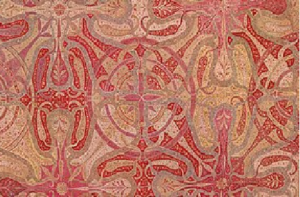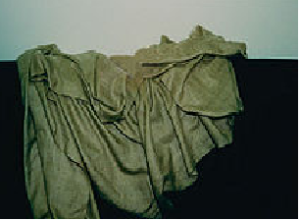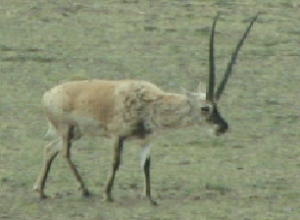Pashmina vs Shahtoosh hair: Delhi HC for modern forensic methods to differentiate between the two
Why in News?
Recently, Custom officials complained about the presence of ‘Shahtoosh’ guard hair in the Pashmina shawl, which is obtained from endangered Tibetan antelopes in many of their export consignments.
What is Pashmina?
- About:
- Pashmina is a Geographical Indication (GI) certified wool that has its origin in the Kashmir region of India.
- Originally Kashmiri people used Pashmina shawls to keep themselves warm during the winter season.
- The term ‘Pashmina’ has been derived from the Persian word “Pashm” meaning a wearable fiber precisely wool.
- Pashmina Shawls are very costly due to their fine quality of wool and the hard work involved in making one single piece.
- Weaving a single Pashmina Shawl takes a long time depending on the type of work involved. It generally takes around 72 hours or more to complete one shawl.
- Source:
- The wool that is used in weaving the Pashmina Shawl is obtained from the Changthangi goats (Capra Hircus) domesticated in Ladakh.
- Fibre Processing:
- The raw Pashm is harvested by the Changpa tribes of Ladakh who herd the Changthangi goats.
- The Changpa are a semi-nomadic community which inhabits Changthang (which is spread across Ladakh and Tibet Autonomous Region) or other regions of Ladakh.
- As of 2001, the Changpa were classified as a Scheduled Tribe under the Indian Government’s reservation program of affirmative action.
- The Kashmiri weavers buy the raw pashmina from the middlemen, the only connecting link between the Changpa tribe & the Kashmiris; clean the grubby raw pashm fiber.
- They then comb the fiber & segregate it according to the fineness.
- It is then hand spun & then set up into warps & put up on the handloom.
- The yarn is then hand woven & transformed into the beautifully luxurious pashmina shawls that are renowned the world over.
- This art of weaving Pashmina Shawls is passed on from generation to generation as a tradition in Kashmir.
- Significance:
- Pashmina is one of the finest and highest quality wool in the whole world.
- Pashmina Shawl attracted the attention of people from all across the world and hence this became one of most demanding shawls in the whole world.
- Its high demand boosted the local economy.
- Concern:
- Due to restricted availability and high prices, adulteration of Pashmina with sheep wool/ultra-fine merino wool is a common practice by manufacturers.
- In 2019, the Bureau of Indian Standards (BIS) published an Indian Standard for identification, marking and labelling of Pashmina products to certify their purity.
- GI Certifying Criteria for Pashmina:
- The shawl should be made from 100% pure Pashm.
- The fineness of the fibers should be up to 16 Microns.
- The shawl should be handwoven by local artisans of Kashmir.
- The yarn should be only spun by hand.
- Due to restricted availability and high prices, adulteration of Pashmina with sheep wool/ultra-fine merino wool is a common practice by manufacturers.
- The raw Pashm is harvested by the Changpa tribes of Ladakh who herd the Changthangi goats.
- Pashmina is a Geographical Indication (GI) certified wool that has its origin in the Kashmir region of India.
What is Shahtoosh?
- Shahtoosh is the fine undercoat fibre obtained from the Tibetan Antelope, known locally as ‘Chiru’, a species living mainly in the northern parts of the Changthang Plateau in Tibet.
- As per the International Union for Conservation of Nature (IUCN) Red list, Chiru has been classified as ‘Near Threatened”.
- As they offer high levels of smoothness and warmth, Shahtoosh shawls became a highly expensive commodity.
- Unfortunately, due to commercial poaching of the animal, their population declined dramatically.
- Convention on International Trade in Endangered Species of Wild Fauna & Flora (CITES) included the Tibetan Antelope in 1979 leading to prohibition in sale and trade of Shahtoosh shawls and scarves.
Many genuine consignments carrying Pashmina wool are erroneously identified as Shahtoosh, possession and sale of which is banned under the Wild Life Protection Act and CITES.
UPSC Civil Services Examination, Previous Year Question (PYQ)
- With reference to ‘Changpa’ community of India, consider the following statements: (2014)
- They live mainly in the State of Uttarakhand.
- They rear the Pashmina goats that yield a fine wool.
- They are kept in the category of Scheduled Tribes.
Which of the statements given above is/are correct?
(a) 1 only
(b) 2 and 3 only
(c) 3 only
(d) 1, 2 and 3
Ans: (b)






